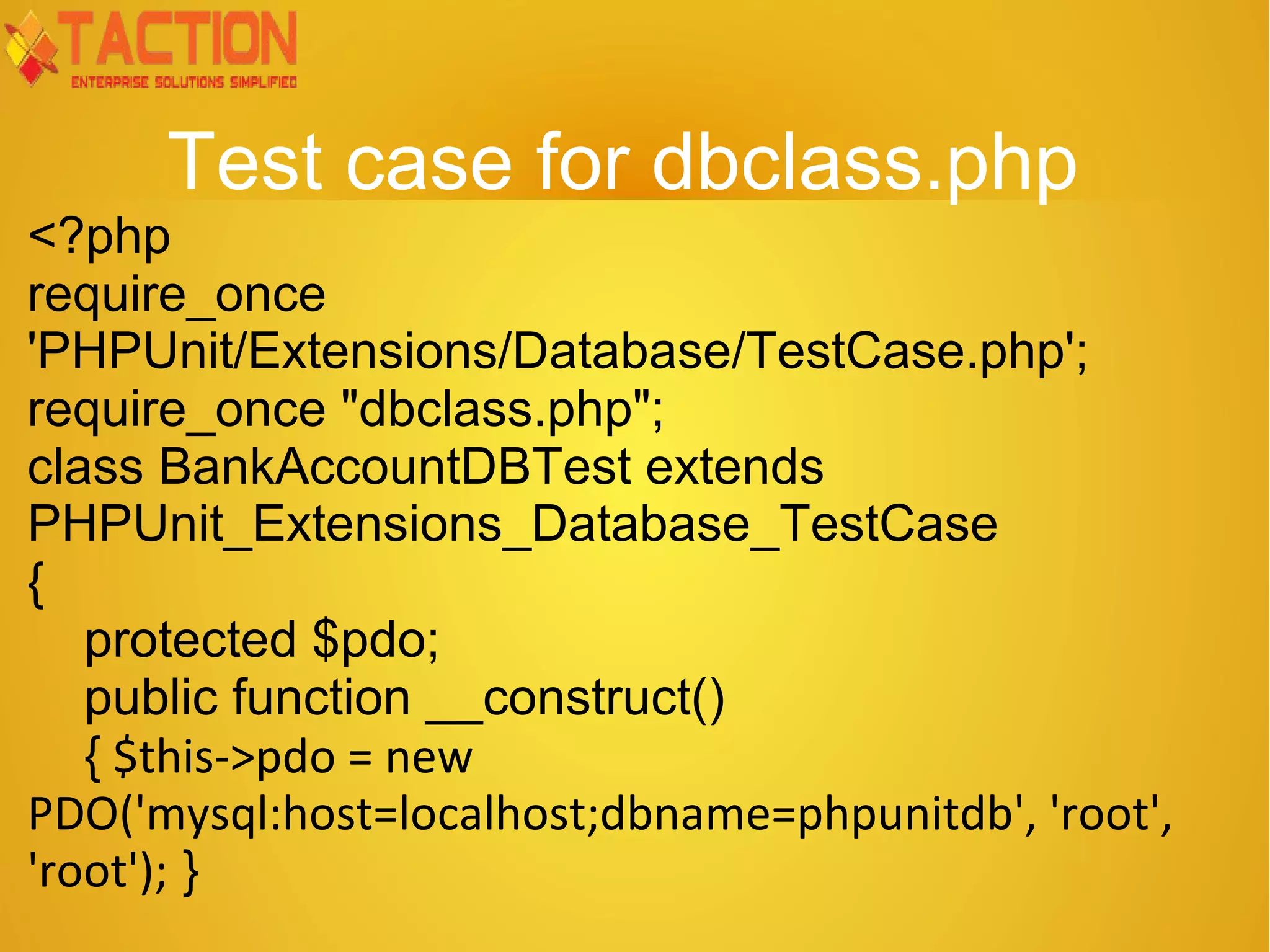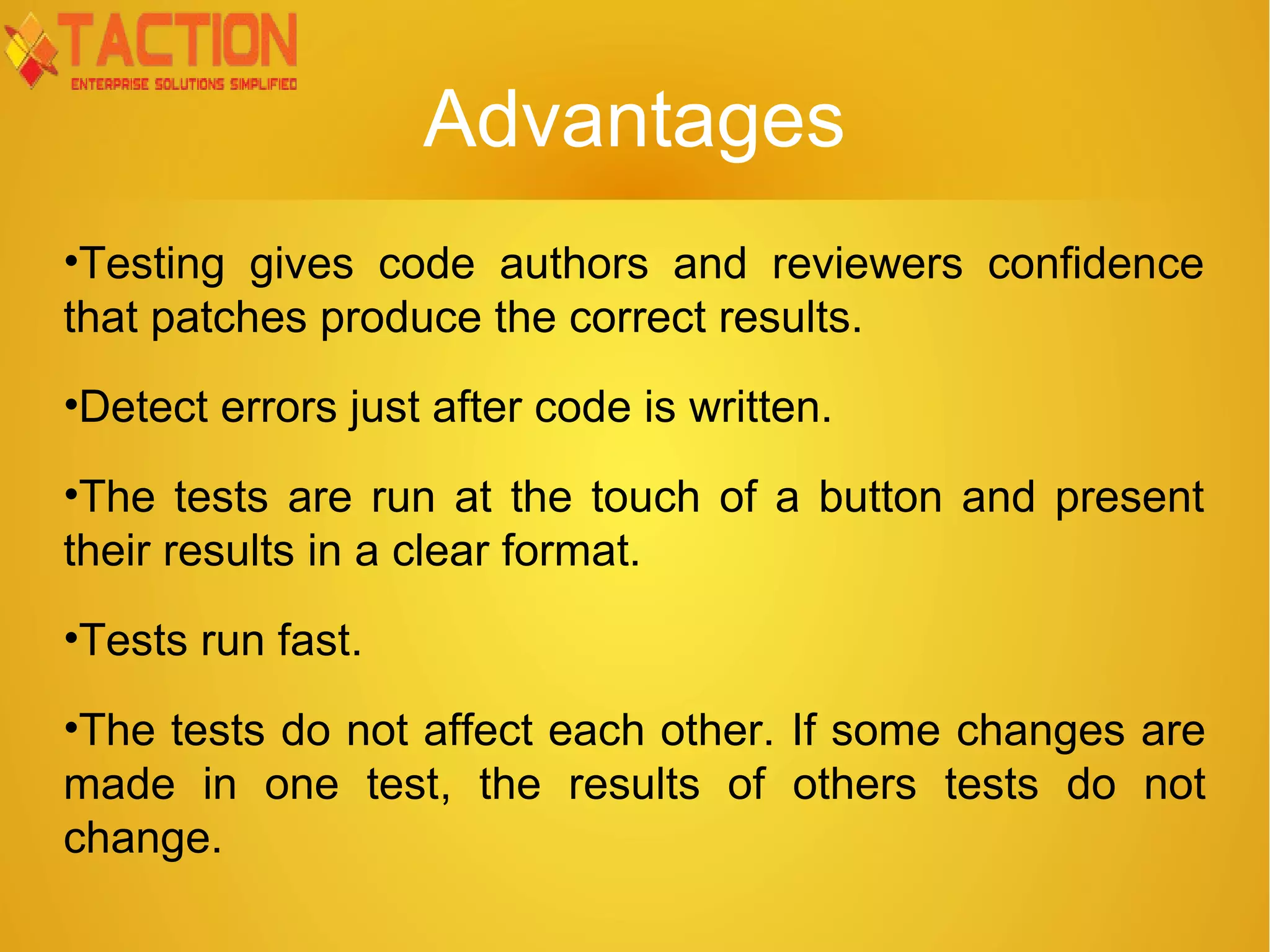The document provides an overview of unit testing with PHPUnit, detailing its installation, usage, and advantages and disadvantages. It includes examples of writing unit tests and database tests, showcasing the use of assertion methods and the structure of test classes. Additionally, it discusses the benefits of unit testing in software development, while also mentioning common challenges faced by beginners.


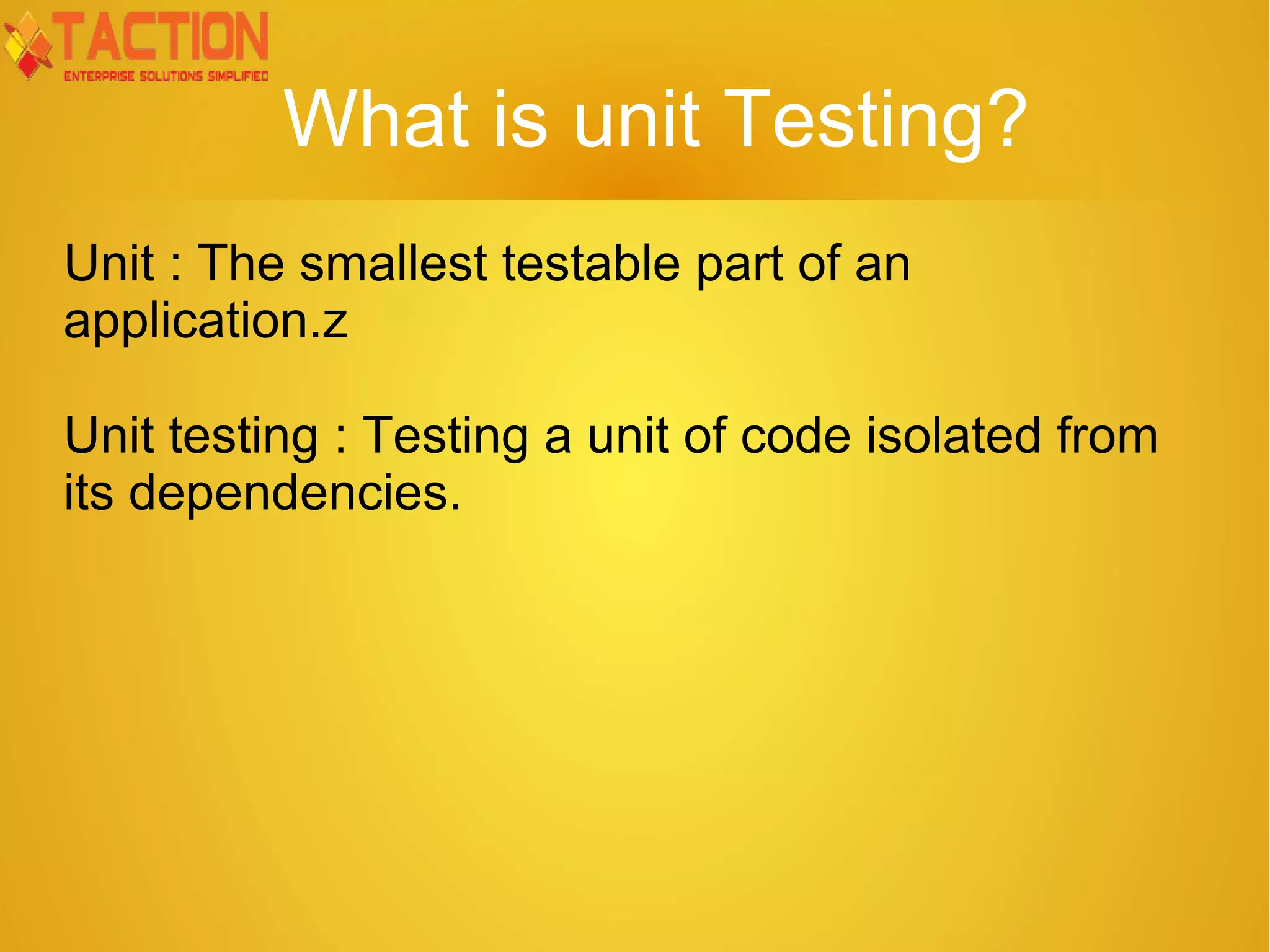




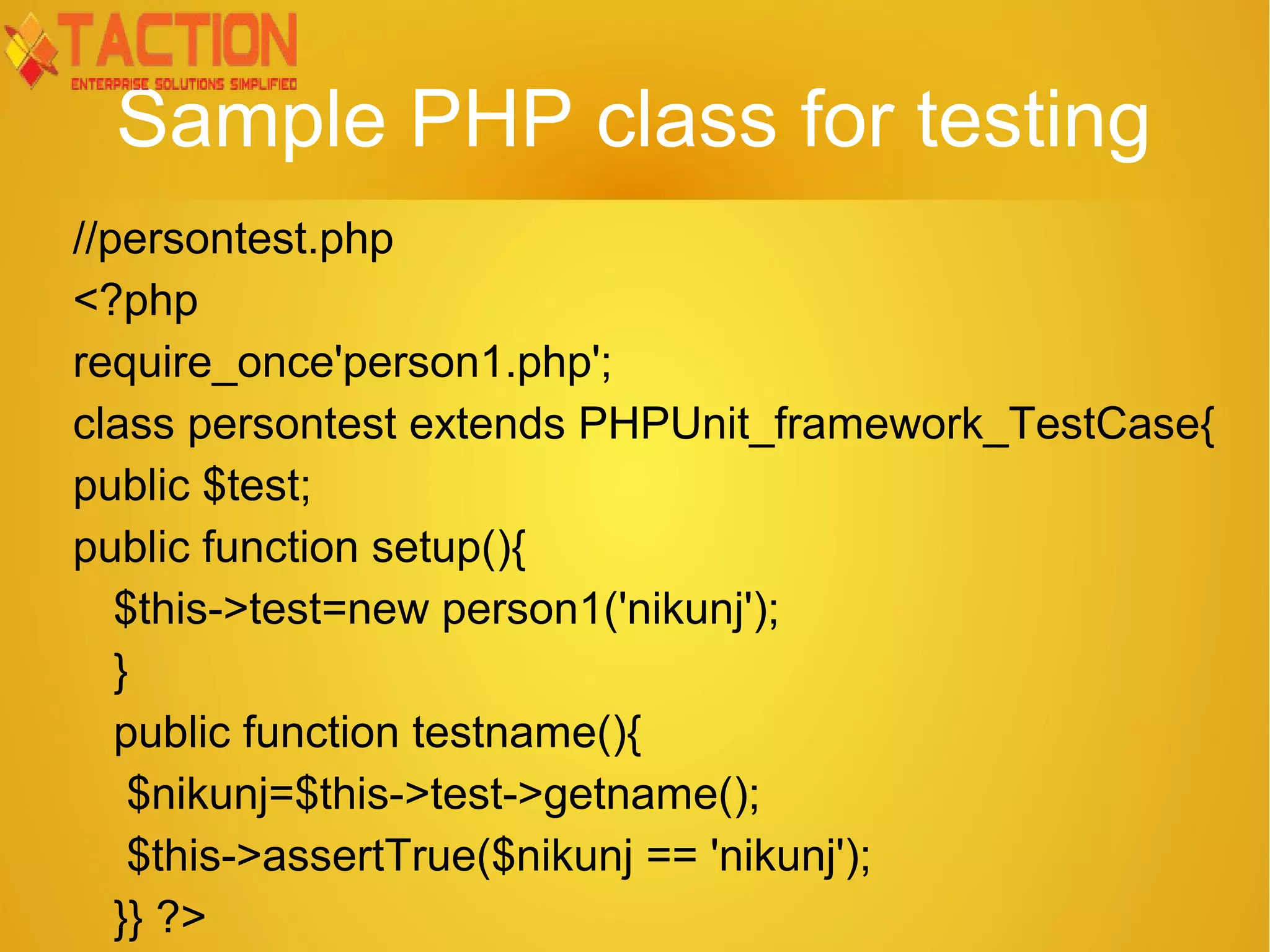
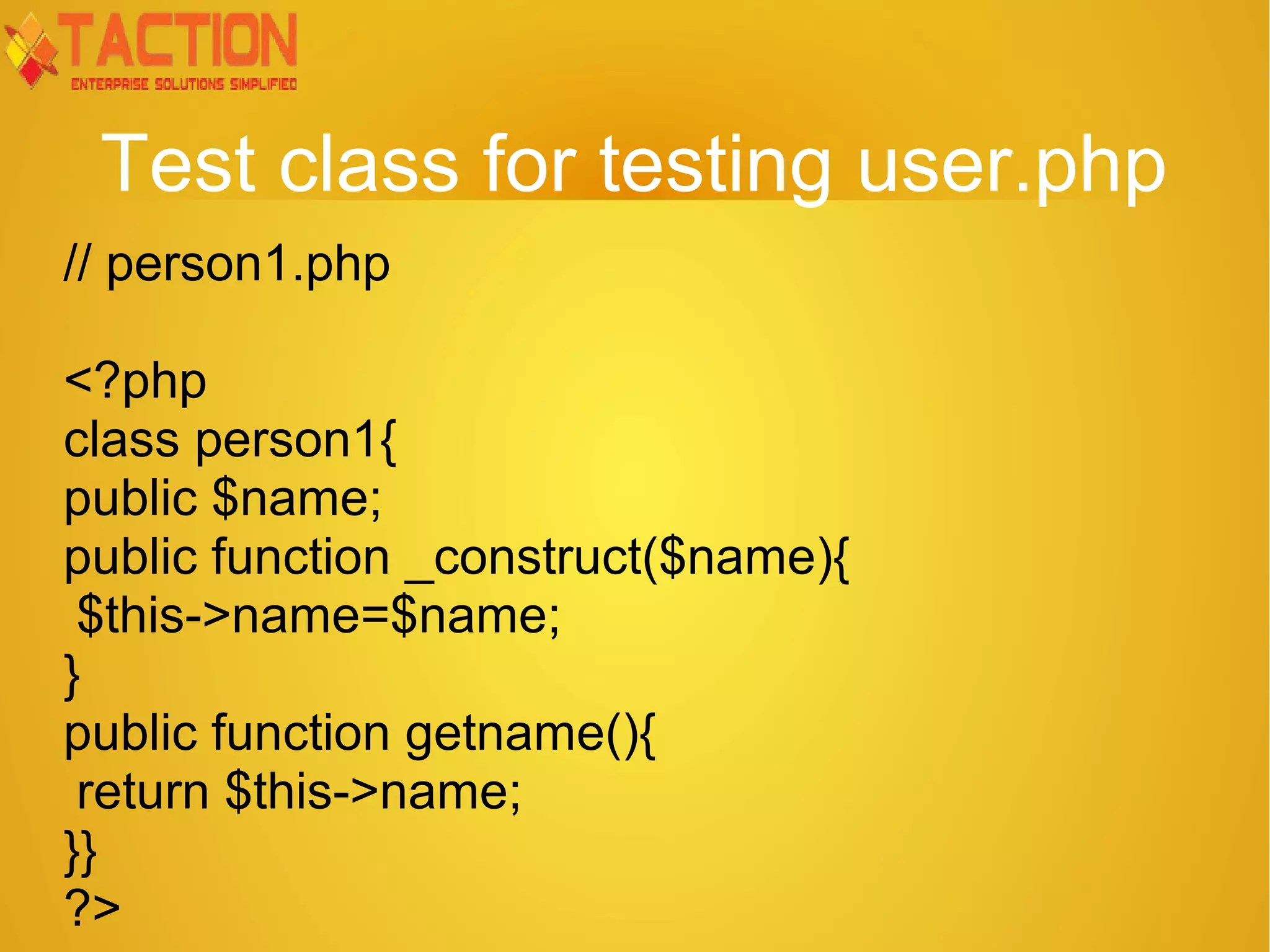

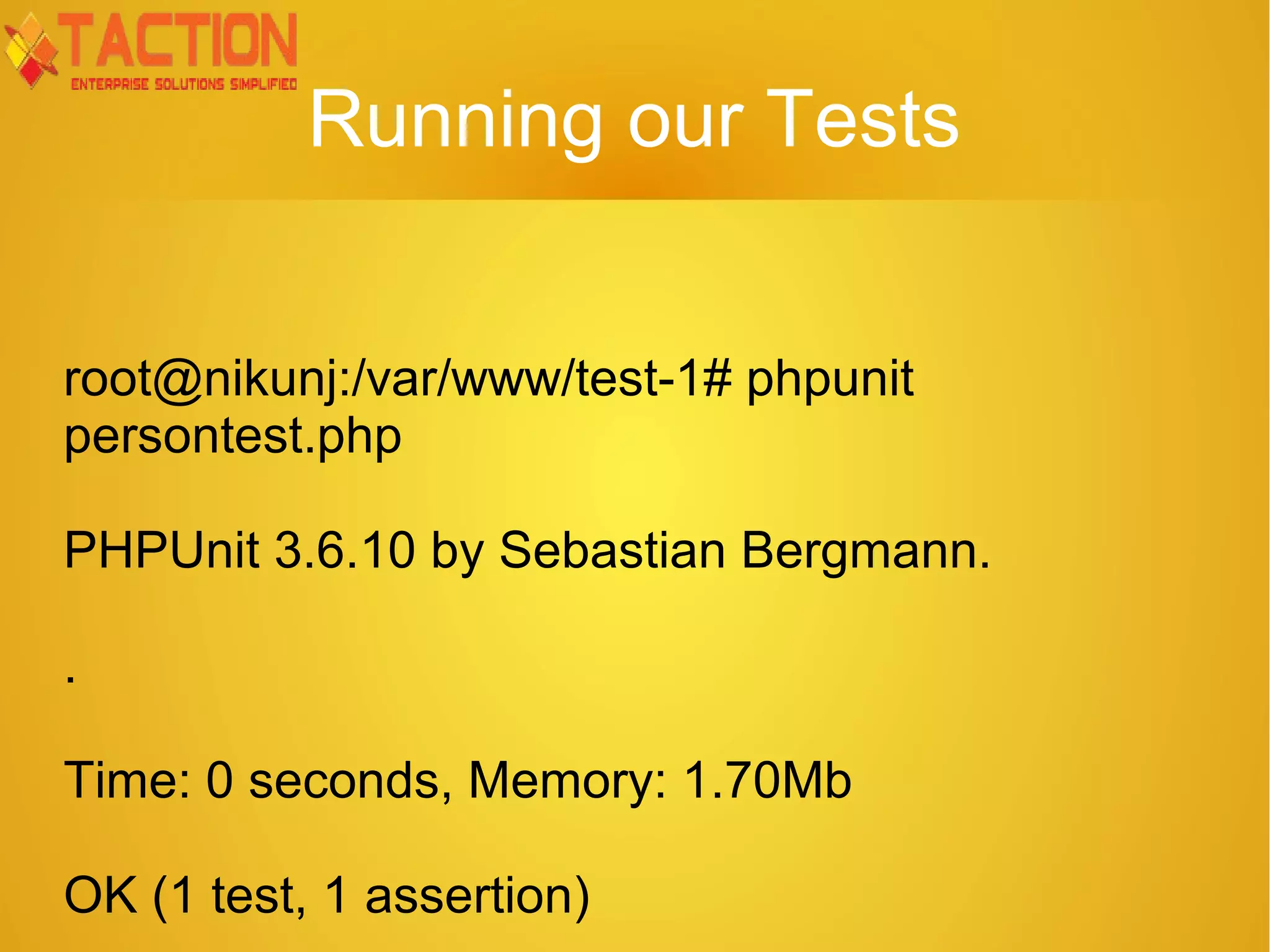

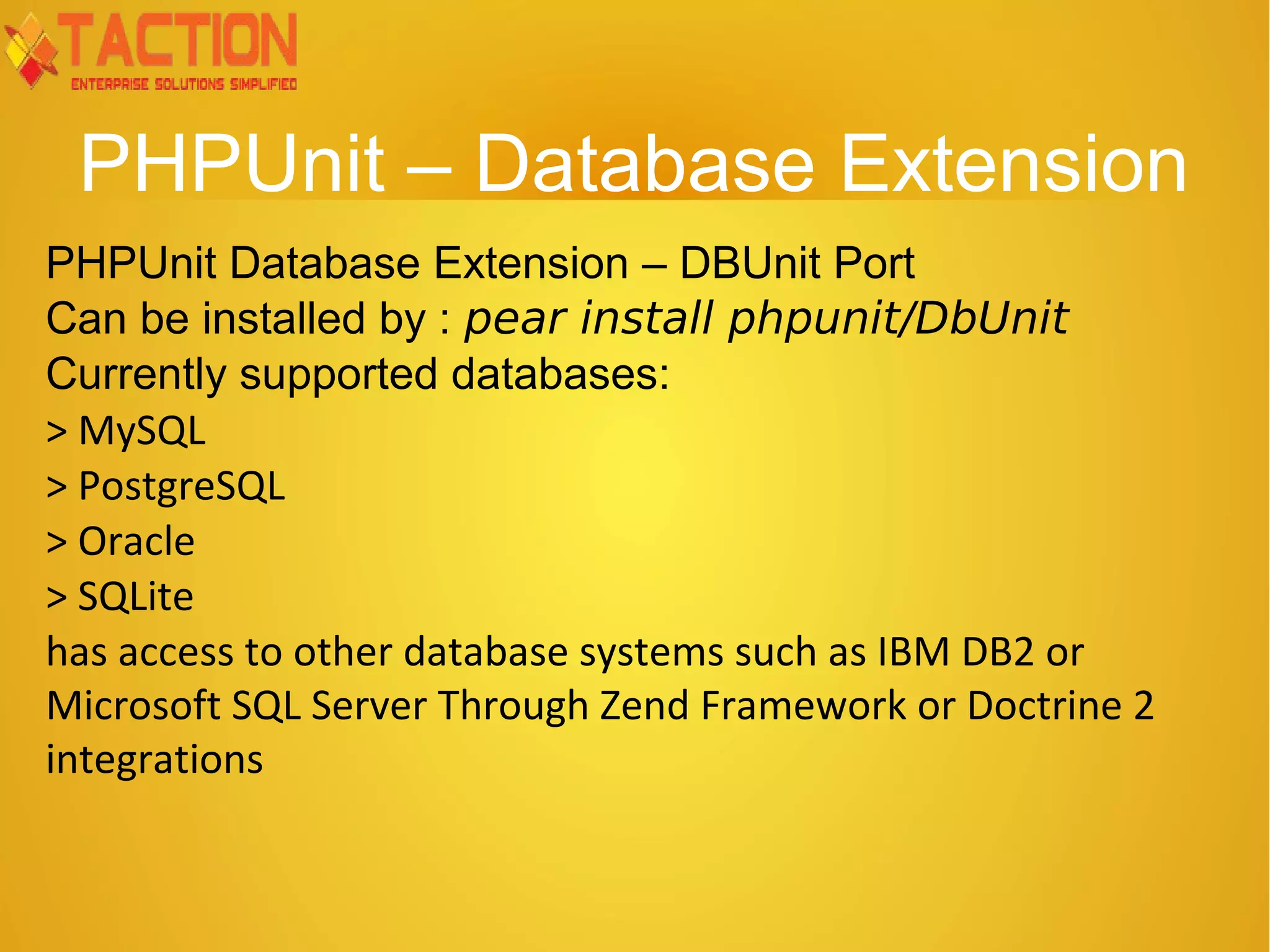
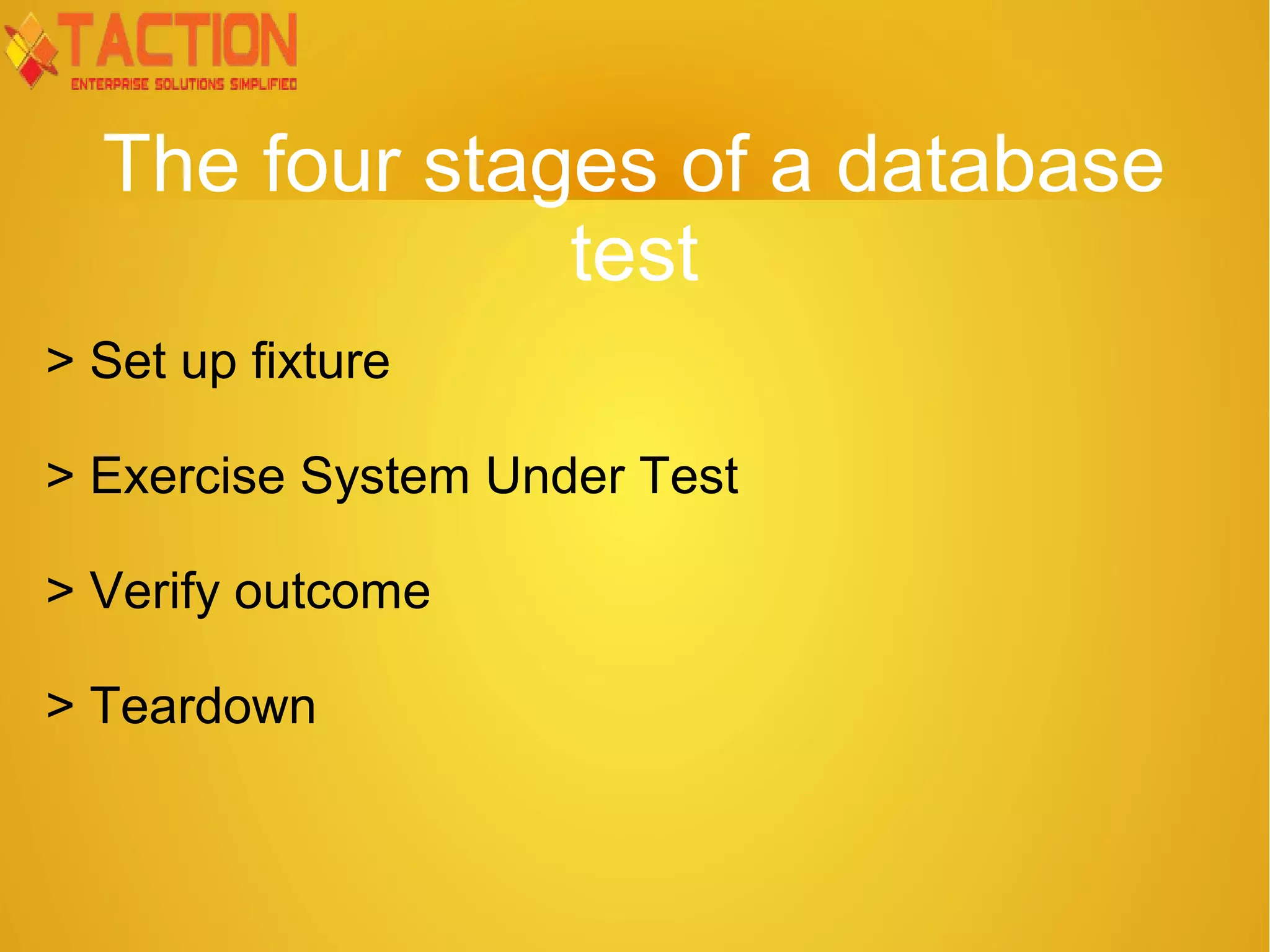
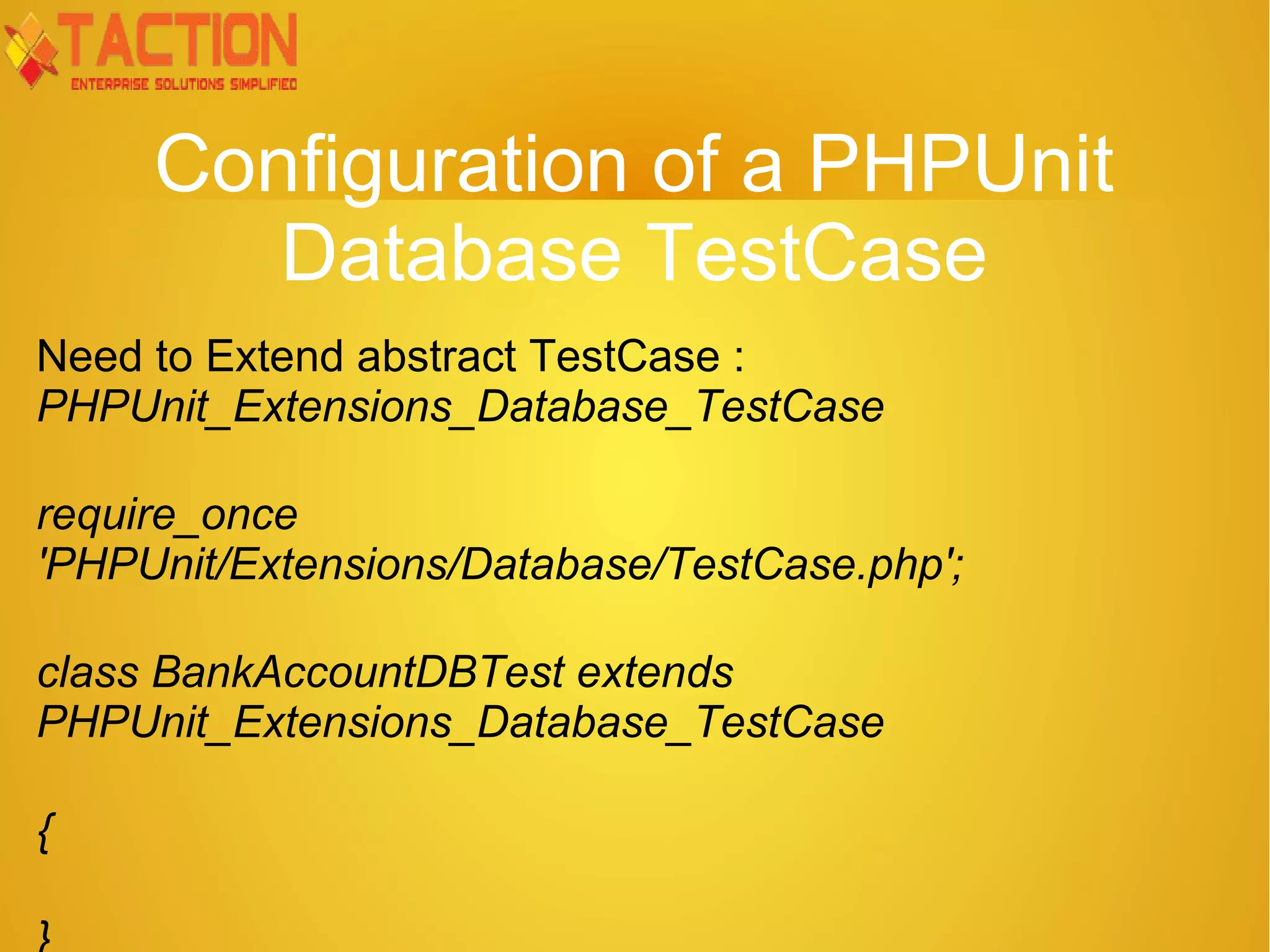
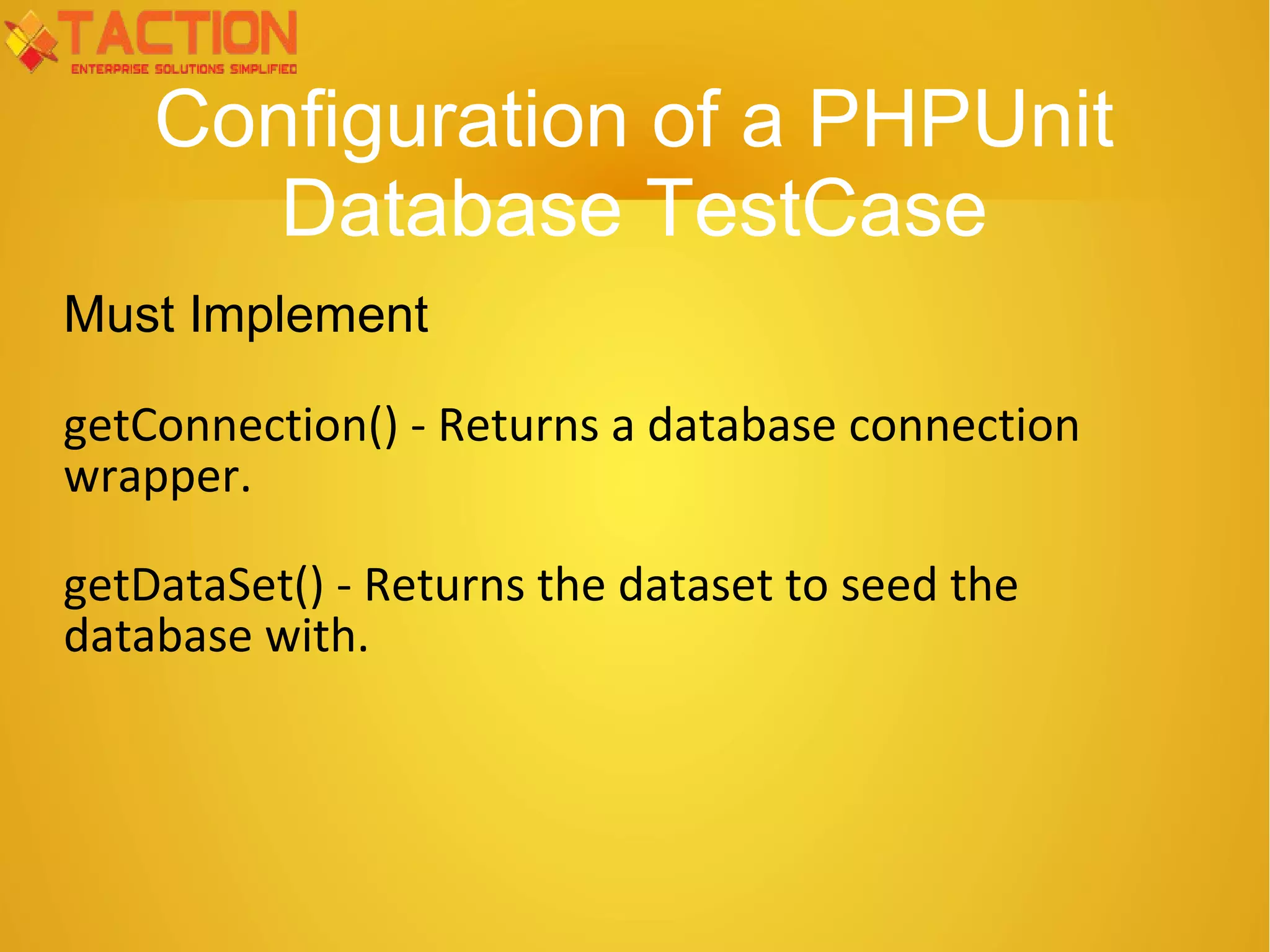
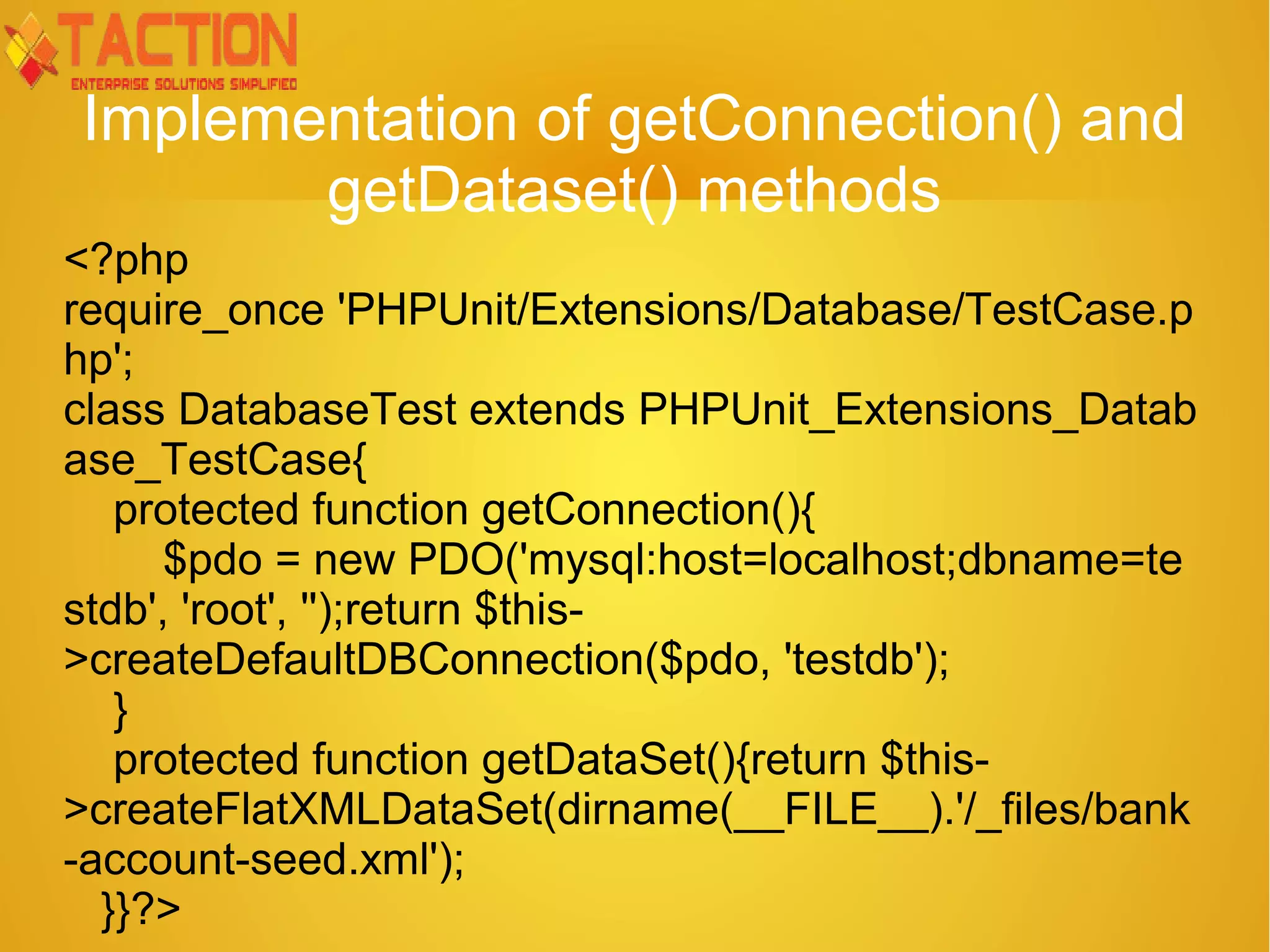
![Test class for database testing //Filename : dbclass.php <?php class BankAccount { public function __construct($accno, $conn, $bal=0) { $this->addData(array($accno,$bal),$conn); }function addData($data, $conn) { $sql = "INSERT INTO bank_account (account_number, balance) VALUES (:acc,:bal)"; $q = $conn->prepare($sql); $q->execute(array(':acc'=>$data[0], ':bal'=>$data[1])); }}](https://image.slidesharecdn.com/phpunittesting-160715025734/75/Phpunit-testing-18-2048.jpg)
